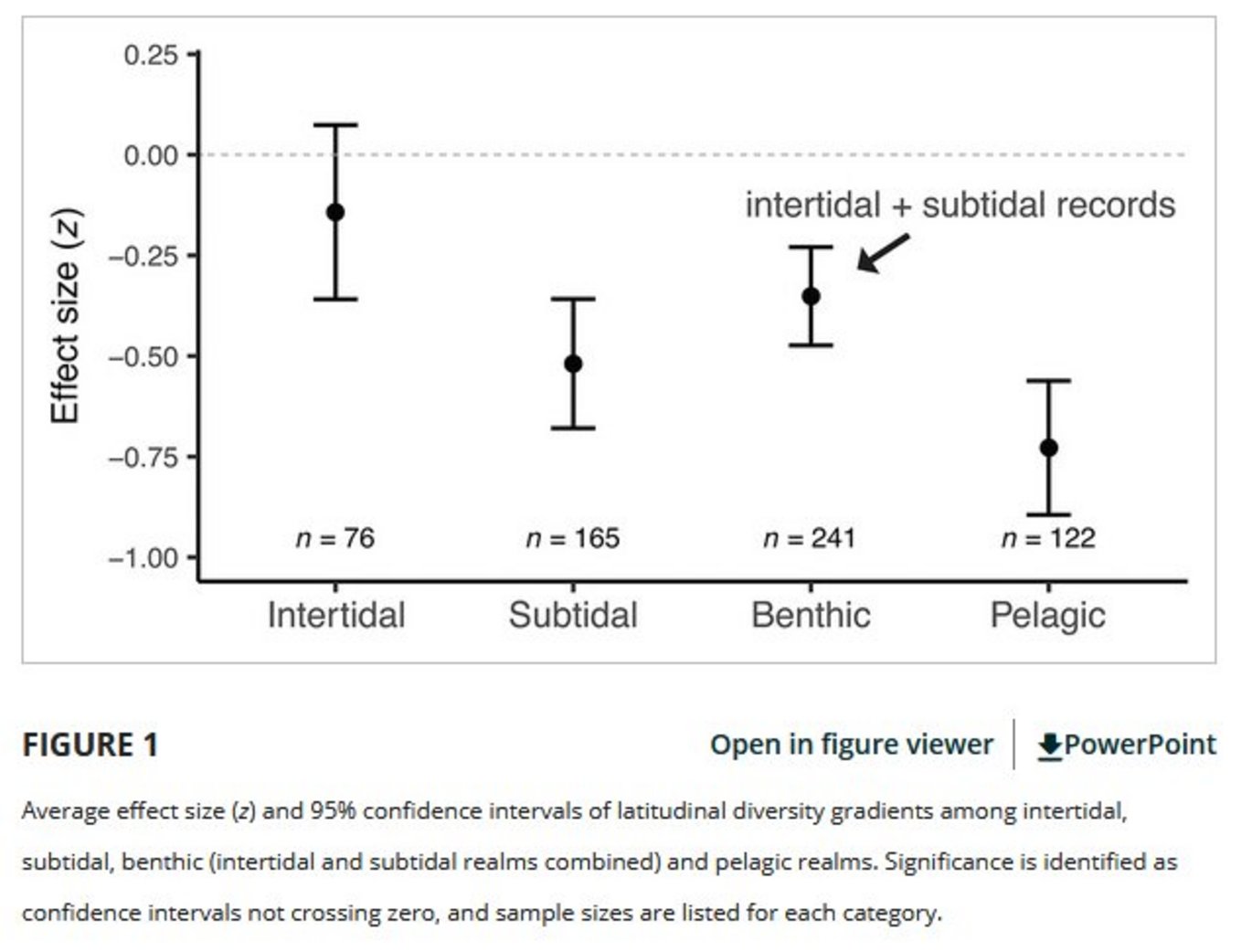Marine latitudinal diversity gradients are generally absent in intertidal ecosystems
New publication by Thyrring J, Harley CDG.

Abstract:
Currentlatitudinal diversity gradient (LDG) meta-analyses have failed to distinguish one of the most widespread marine habitats, the intertidal zone, as a separate system despite it having unique abiotic challenges and spatially compressed stress gradients that affect the distribution and abundance of resident species. We address this issue by revisiting published literature and datasets on LDGs since 1911, to explore LDG patterns and their strengths in intertidal benthic, subtidal benthic, and pelagic realms and discuss the importance of recognizing intertidal ecosystems as distinct. Rocky shorelines were the most studiedintertidal ecosystem encompassing 64.2% of intertidal LDG studies, and 62.9% of studies focused on assemblage composition, while the remaining 37.1% studies were taxa specific.While our analyses confirmed LDGs in subtidal benthic and pelagic realms, with a decrease in richness towards the poles, we found no consistent intertidal LDGs in any ocean or coastline across hemispheres or biodiversity unit. Analysing intertidal and subtidal zones as separate systems increased the strength of subtidal benthic LDGs relative to analyses combining these systems.We demonstrate that in intertidal ecosystems across oceans in both hemispheres, a latitudinal decrease in species richness is not readily apparent, which stands in contrast with significant LDG patterns found in the subtidal realm. Intertidal habitat heterogeneity, regional environmental variability and biological interactions can create species rich hot-spots independent of latitude, which may functionally outweigh a typical latitudinal decline in species richness. Although previous work has shown weaker LDGs in benthic than pelagic systems, we demonstrate that this is caused by combining subtidal and intertidal benthic ecosystems into a single benthic category. Thus, we propose that subtidal and intertidal ecosystems cannot be combined into one entity as the physical and biological parameters controlling ecosystem processes are vastly different, even among intertidal.
